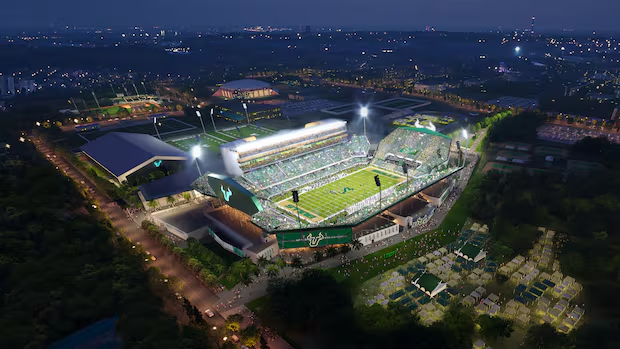
Florida College Football Programs Pursue Billion-Dollar Stadium Projects Amid Financial Contradictions
In the realm of major college sports, a significant contradiction is unraveling, one that pits financial worries against massive stadium construction and renovation projects across the nation’s campuses.
Athletic directors like Greg Byrne of Alabama express ongoing concerns about financial stability, especially as changes loom with revenue-sharing arrangements amidst legal developments. The impending $2.8 billion settlement in the House v. NCAA antitrust lawsuit signifies a shift in revenue dynamics, with schools expecting substantial reductions in NCAA payouts. Furthermore, the impending allowance for player compensation, potentially up to $22 million per school, adds pressure to already strained budgets.
Meanwhile, a consortium of Florida-based institutions, including Florida, Florida State, USF, and UCF, is collectively embarking on ambitious football stadium ventures totaling over $1 billion. This stark contrast begs the question: how can schools justify such monumental investments amid financial anxieties?
The rationale behind the financial worries is clear. With anticipated decreases in NCAA payouts and the necessity to allocate funds for player compensation, institutions must scrutinize every expenditure. Athletic directors like Scott Stricklin of Florida emphasize the need to ensure that resources are allocated judiciously for optimal outcomes.
Conversely, proponents of stadium construction argue that such investments not only enhance facilities but also generate substantial revenue streams. For instance, Stricklin notes that the Gators’ new baseball stadium yields sevenfold returns compared to its predecessor. Similarly, USF’s plans for a $340 million on-campus football stadium aim to bolster revenue, enabling greater competitiveness and potentially facilitating player compensation.

However, the nature of facilities development has evolved, particularly since the legalization of name, image, and likeness (NIL) payments in 2021. Bryan McCaffrey of DPR Construction highlights a shift in priorities towards functional enhancements rather than extravagant amenities. This pragmatic approach ensures that investments align with student-athlete needs, such as sports medicine facilities and media training spaces.
Ultimately, the debate surrounding college sports finances underscores differing perspectives. USF trustee Oscar Horton’s viewpoint, viewing athletics as a lucrative investment, exemplifies a paradigm shift. In this context, the continued emphasis on stadium projects aligns with a broader strategy aimed at revenue maximization.
While uncertainties loom regarding the feasibility of financial projections and conference realignments, institutions remain steadfast in their pursuit of revenue-generating opportunities. As Michael Kelly of USF aptly states, success hinges on collaboration between universities and their supporters, underscoring the collective effort required to navigate the complex landscape of college sports finance.





